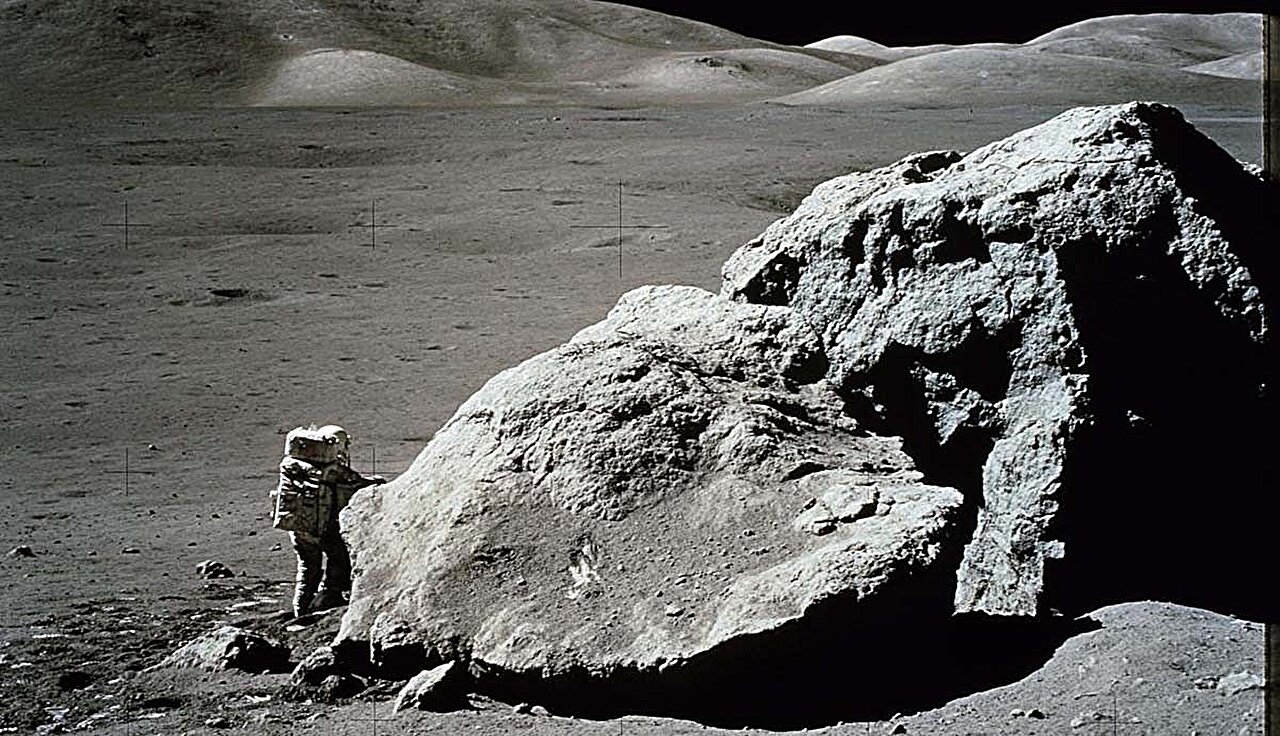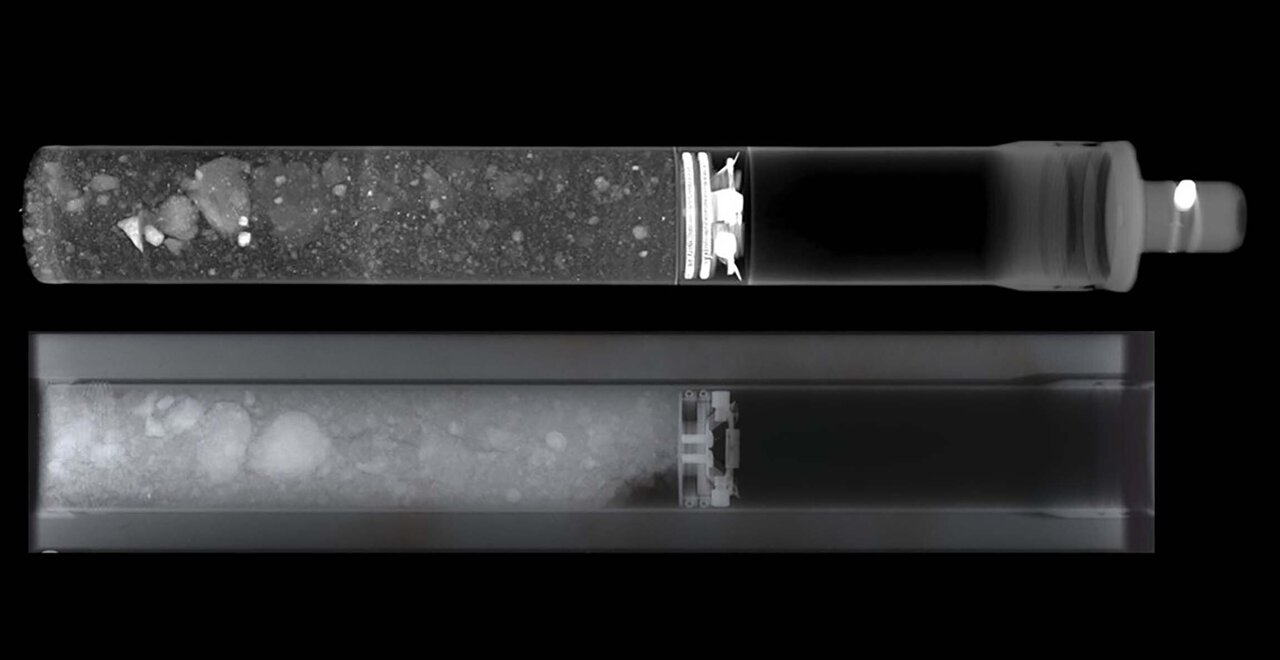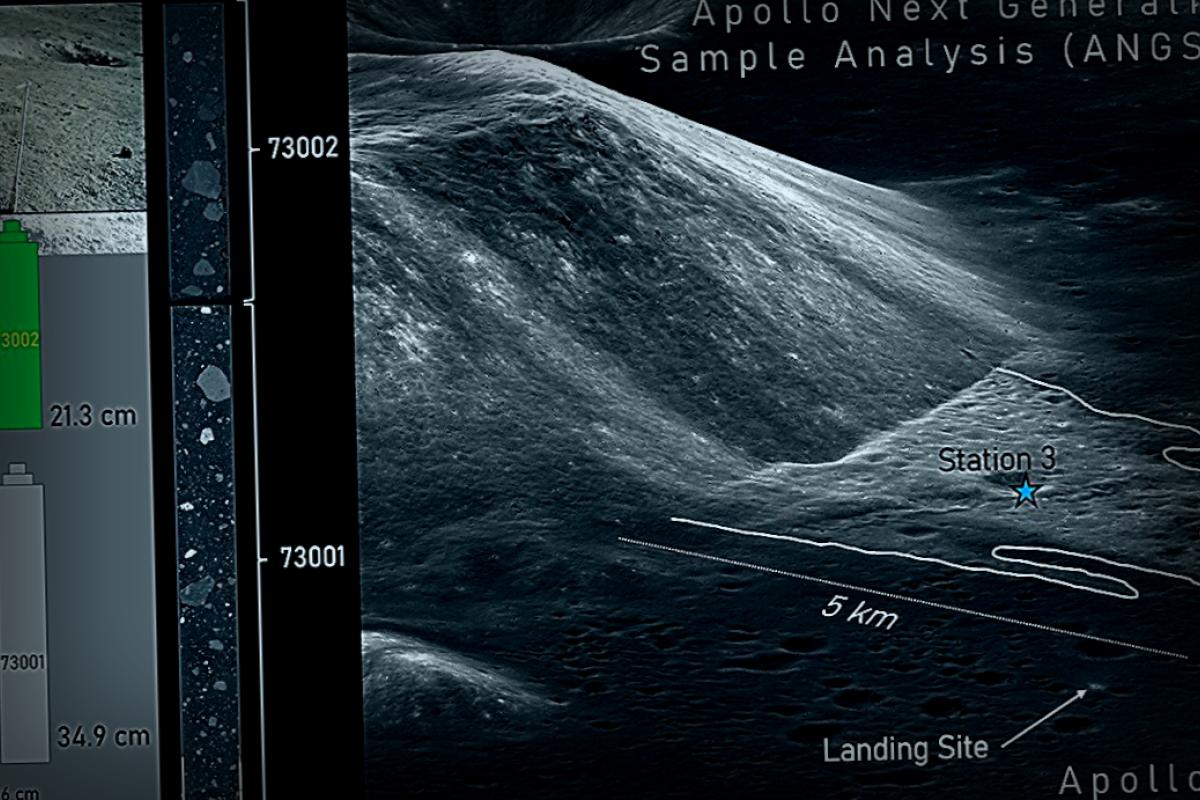Can you believe it’s been over 50 years since the last crewed mission to the Moon? Even now, findings from the Apollo program are still surprising us!
The latest news comes from a lunar rock sample collected during the Apollo 17 mission, which is revealing new details about something called the Light Mantle—a bright strip on the Moon’s surface thought to be the result of an ancient landslide, though the exact culprit remains unknown.

Asteroids, impact debris, or even geological activity are potential causes for this phenomenon. However, regular photos from space can only provide limited information. Recently, researchers studied a rock core from Apollo 17, opening it for the first time in 50 years and paving the way for new scientific insights into the lunar landscape.

The research team, led by Dr. Giulia Magnarini, an expert in lunar geology, emphasizes that these ongoing studies of Apollo samples are crucial for planning manned missions back to the Moon in the near future.
As Giulia puts it, “This study carries forward the legacy of the Apollo programs more than half a century later, and it serves as a stepping stone towards the Artemis program aim to return humans to the lunar surface,”
She continues, “We’ve gained so many insights into how to safely store and analyze lunar samples without causing harm to their contents. This knowledge is deeply influencing the scientific strategies for ongoing Artemis missions and the development of cutting-edge equipment for lunar exploration.”
Looking to explore these fascinating findings further? The full study has been published in the Journal of Geophysical Research: Planets!
Apollo 17: Pioneers of Lunar Science
Apollo 17—launched in 1972—was the final mission of the Apollo program, but it wasn’t just a cosmic farewell; it was a pioneering journey with many ‘firsts.’ It set records for the longest time spent orbiting the Moon, and it also made history by sending a group of mice into lunar orbit to study cosmic ray effects.
One of the mission’s most significant achievements was sending the first scientist, Harrison Schmitt, to the Moon. Unlike his astronaut predecessors who were primarily trained for research tasks, Schmitt brought along his PhD in geology, which proved invaluable while he and astronaut Eugene Cernan researched lunar rocks.
The Light Mantle was a key focus of their studies. Stretching for five kilometers at the base of the towering South Massif ridge, its unusual characteristics have intrigued scientists since its discovery.
According to Giulia, “I’m familiar with long-runout landslides here on Earth and even on Mars, but the Light Mantle is the only one we’ve identified so far on the Moon. We’re still trying to unravel the mystery of its origin and why it stretched out across such vast distances.”
Core samples were extracted from the Light Mantle, which contribute to the impressive 110.5 kilograms of lunar rocks that Apollo 17 returned to Earth—more than any other Apollo mission. Although some of these samples were analyzed years ago, much remained untouched, waiting for future technological advancements.
“NASA was truly innovative by preserving some of these samples for later studies,” Giulia notes. “They anticipated that future technologies would enhance our ability to investigate these materials more thoroughly than was possible back then.”
She goes on to describe, “Original scanning techniques were quite basic. With modern micro-CT scanning, we can conduct medical-grade imaging that uncovers immense detail within these samples.”
Understanding Lunar Landslides
Utilizing data from the NASA samples, Giulia and team studied its components at the Imaging and Analysis center, focusing on clasts—pieces that broke away from the South Massif slope during the landslide.
The team had previously used simulations to model potential landslide dynamics on the Moon. Now, they could directly compare results from their studies with real data from the core to see how accurately their models matched the Moon’s conditions.
“The clasts reveal a great deal about the landslide’s mechanics and how materials were moved around,” Giulia explains. “We discovered that the finer materials surrounding these clasts originated from the clasts themselves rather than the larger debris pile, suggesting they facilitated a more fluid-like movement during the landslide.”
The cause of this particular landslide isn’t definitively known, but some researchers speculate it might relate to the Tycho crater’s formation caused by a massive asteroid strike. Brute force during the impact could have sent tons of lunar material flying, scattering debris over great distances.
As this debris hit the surface, it would create smaller craters, visible in patterns radiating from Tycho, some aligning with the South Massif and Light Mantle regions.
Giulia elaborates, “It’s been proposed that clouds of materials generated from Tycho could have impacted the South Massif, resulting in the landslide that produced the Light Mantle. We’re actively studying this hypothesis within the context of Moon’s broader geological history.”
For more info: G. Magnarini et al, 3D and 2D Clast Analysis of Apollo 17 Core Sample 73002: Insights Into the Light Mantle Dynamics and Regolith Reworking, Journal of Geophysical Research: Planets (2025). DOI: 10.1029/2024JE008422
This article is shared with us by the Natural History Museum. You can read the original piece here.
Provided by Natural History Museum
This report was originally shared on Phys.org.




















